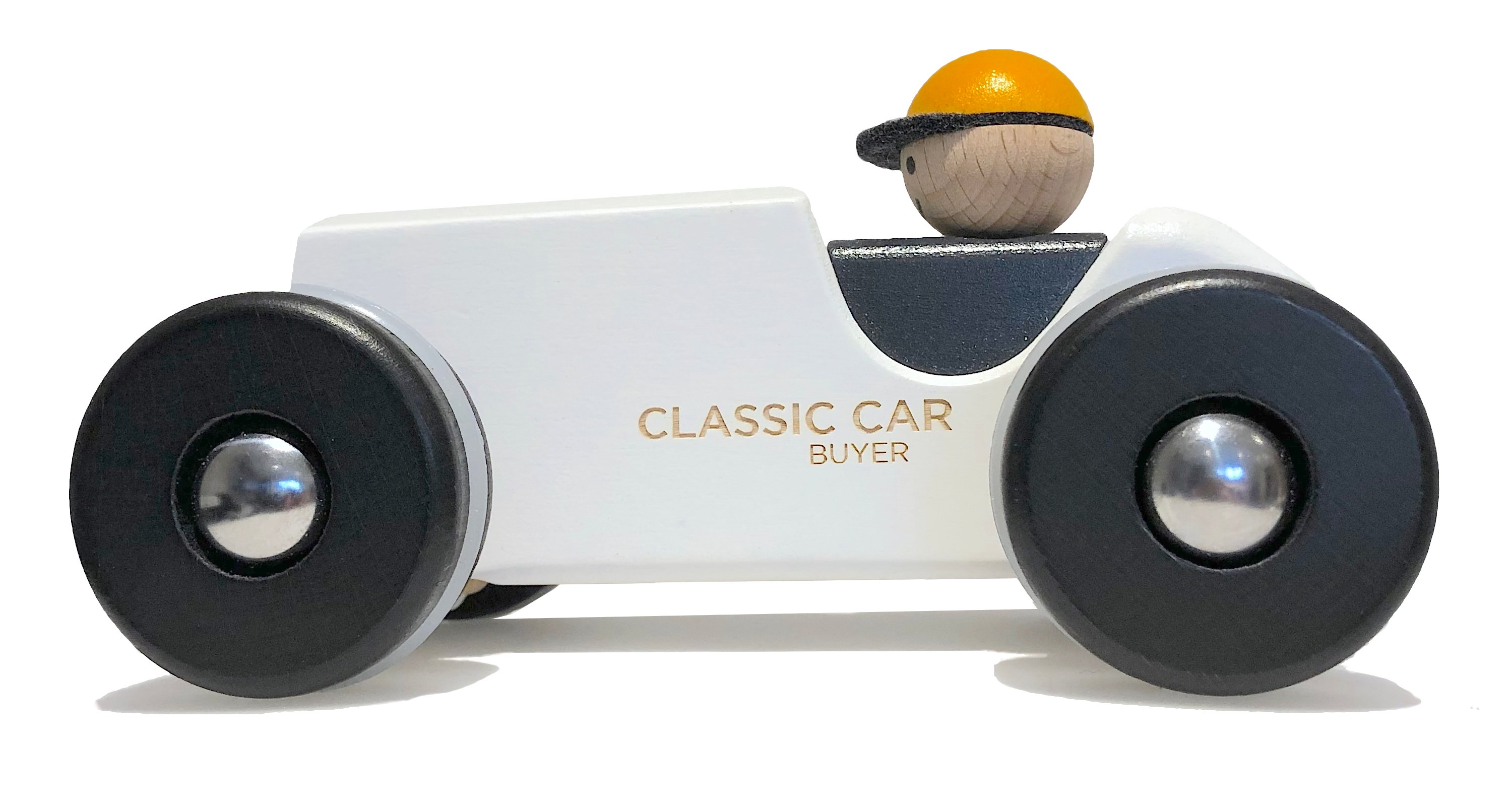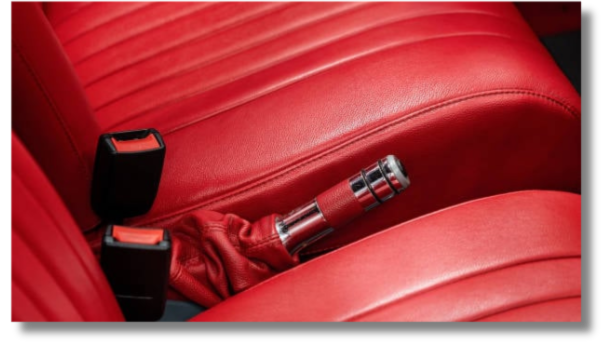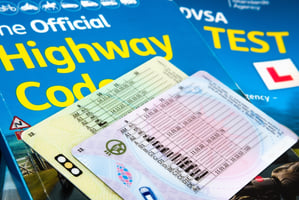When we’re learning to drive (or refreshing our knowledge of the rules of the road) it’s important...
When it comes to classic cars, owners may find themselves scratching their heads when considering the law regarding seatbelt fittings and usage. While modern vehicles have quite stringent seatbelt requirements, the law surrounding classic cars can seem a bit more nuanced. Let's delve into the specifics of what’s required for classic cars in the UK, to shed some light on what both the owners of these cars and those travelling in them need to know.
First of all, what is the definition of a classic car, and is this important?
There isn’t really a definitive answer to this question, but in the UK, vehicles over 40 years old are recognised by the DVLA for Historic Vehicle status, making them exempt from paying Vehicle Excise Duty (road tax) and MOT tests. Apart from this, whether a car is classed as a ‘classic’ or not often tends to come down to the make, model and year of each car in question.
However, when looking at the seatbelt requirements, we need to look at the legislation pertaining to seatbelts themselves, and the relevant time period when the legislation was issued, rather than worrying about the classic status or otherwise for the car itself.
What does the legislation require?
It’s been the law to use a seatbelt in the UK since 1983, with the introduction of the Road Traffic Act 1988 and with the subsequent addition of some combined amendments in The Motor Vehicle (Wearing of Seatbelts) (Amendment) Regulations 2006.
So let’s get straight to the point. If a classic car was originally manufactured without seatbelts, then it currently does not need to have seatbelts fitted. Many cars were manufactured without them prior to the legislation being introduced in 1983.
However, unless your car is a very old classic car then it's unlikely your vehicle won't have seatbelts of some sort. It has been a legal requirement in the UK since 1965 that all new cars must have anchorage points fitted in the front, and in 1967 it was decreed that it was necessary for three-point seatbelts to be fitted in the front seats.
By 1987, all new cars sold in the UK legally had to have rear seatbelts fitted too, although most manufacturers were already fitting them as standard. In 1989 it became a legal requirement for children travelling in the back of cars to wear seatbelts, and in 1991 adult passengers also had to wear seatbelts in the back of cars.
So the key point here is this: If your car was manufactured before 1965 and seatbelts were not fitted at the point of manufacture, you are not required to fit them. If your car was sold in the UK from 1965 onwards, it will likely have front seatbelts but potentially not always rear ones.

What are the rules about travelling with children?
According to the DVLA, if your vehicle doesn’t have seatbelts you are not allowed to carry any children under three years old in it. Children over three years old are only allowed to sit in the back seats, and can travel without a child car seat and without a seatbelt if the vehicle doesn’t have them. These rules only apply if your vehicle was originally made without seatbelts.
Otherwise, in most cases, children must always be in a suitable child car seat. In general, you must make sure that any children in the vehicle you’re driving are in the correct car seat for their height or weight until they reach 135 cm tall or their 12th birthday, whichever is first. The information on the correct car seat can be found here. Passengers aged fourteen and over must wear seatbelts - in the same way that adults must - if they are fitted.
The driver is responsible for ensuring that anyone under the age of 14 is wearing their seatbelt and is also in the correct child restraint, if applicable, and can be fined £100 (or up to £500 if the case goes to court) if that’s not the case.
If a child under 14 is in the front of the car, the car mustn’t be driven on a road unless they are wearing a seatbelt. Also, do remember that the front airbag should be deactivated if a child is in the front and is in a rear-facing child restraining device.
Phew... that's a lot of information! Bear with us...
Are there any exemptions?
As we’ve said, you must wear a seatbelt if one is fitted in the seat you’re using - there are only a few exceptions, namely for a driver who is reversing, or someone who is supervising a learner driver who is reversing. Another exception would be if you have a medical condition and a doctor has issued you with a Certificate of Exemption from Compulsory Seatbelt Wearing.
What type of seatbelts should be in place?
Depending on the situation, you may be able to use a lap belt, but bear in mind that three-point seatbelts are safer. However, wearing a lap belt is far better than wearing no seatbelt at all, because it will help prevent the wearer from being thrown about inside the vehicle or being ejected from it in the event of a crash.
Do remember that you’re also only allowed to have one person in each seat fitted with a seatbelt.
So what does this mean for insurance?
Getting insurance for a classic car without seatbelts could prove to be more difficult, and the car could be more expensive to insure. It’s a good idea to contact insurance companies that specialise in classic vehicles in this instance, and always make sure your insurer is aware of the seatbelt situation in your car.
Can seatbelts be retrofitted?
Yes, they definitely can, and if you are thinking of going down that route then really they should be fitted by a professional. If fitted, your classic’s belts must comply with what the current legislation says, even if the car was manufactured before the date required for them to be installed. It’s a good idea for older seatbelts to be regularly checked, too - they can fray or get damaged over time. Any seatbelt involved in an accident should be replaced.

Should I add seatbelts to my car?
Well, the answer to this is most probably yes, if it’s possible to do so. When it comes to safety, wearing a seatbelt can obviously save your life in the event of a crash. According to the Department for Transport, anyone in a 30 mph crash, sitting in the back of a car without a seatbelt will hit the front seat – and anyone in it – with a force of 30 to 60 times their own body weight. Additionally, any compensation you might get for injury resulting from an accident may be reduced if it transpires you were not wearing a seatbelt.
Some people might be concerned that retrofitting seatbelts may affect the value of the classic car, as it might lose its originality. It might feel ok to do this on a lower-value Triumph, for example, but there might be hesitation to include them in a Ferrari Daytona…
Generally though, it sounds like a no-brainer, and the benefits for the safety of the occupants would surely outweigh any aesthetic concerns, or worries about preserving the original feel of the car.
So, there we have it. Legally, if your car has seatbelts fitted, then they must be worn, and if they don’t have them fitted, it’s probably a good idea that they are fitted retrospectively, to protect those travelling with you in the car (especially in the case of children - regardless of what the current law might say…)
Disclaimer: This is for information only. We’ve taken every care to ensure that the information within this article is correct, but please make sure to keep up to date with the legislation and guidance on this topic as things could change.







